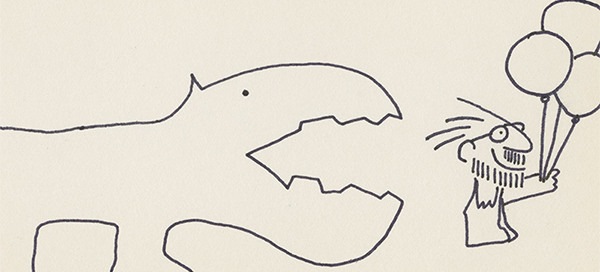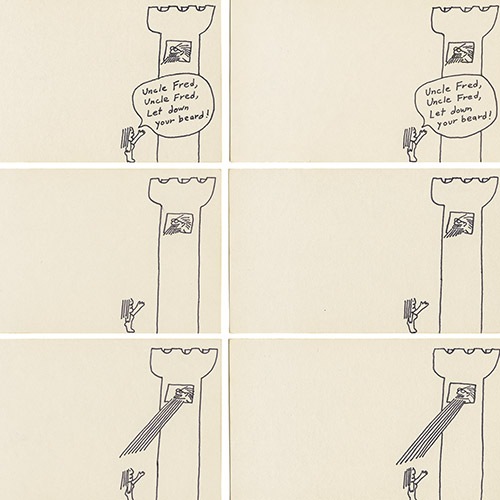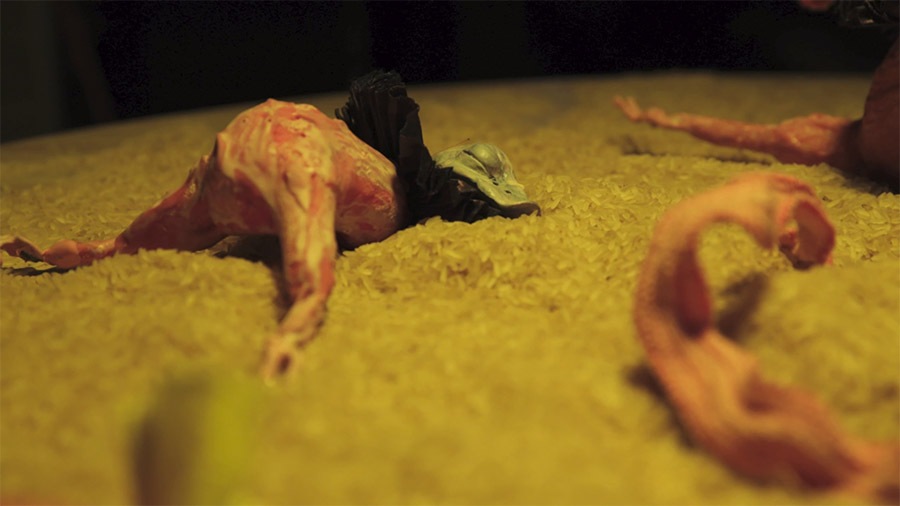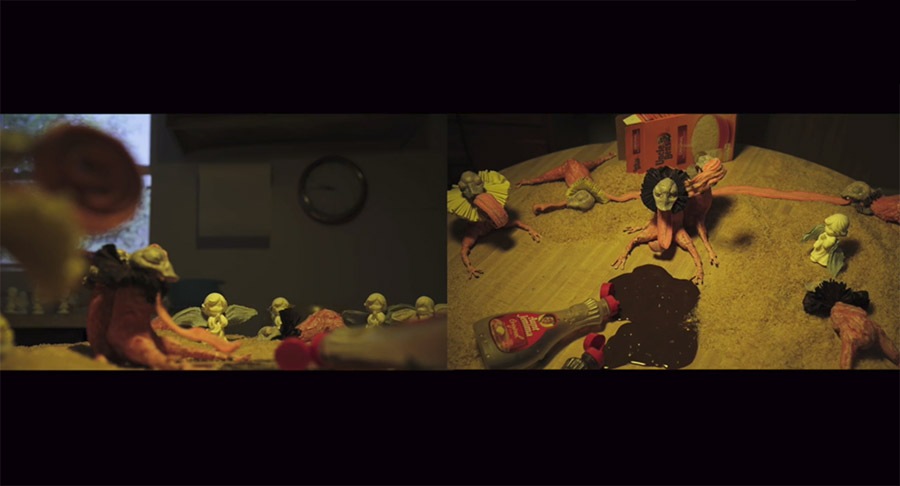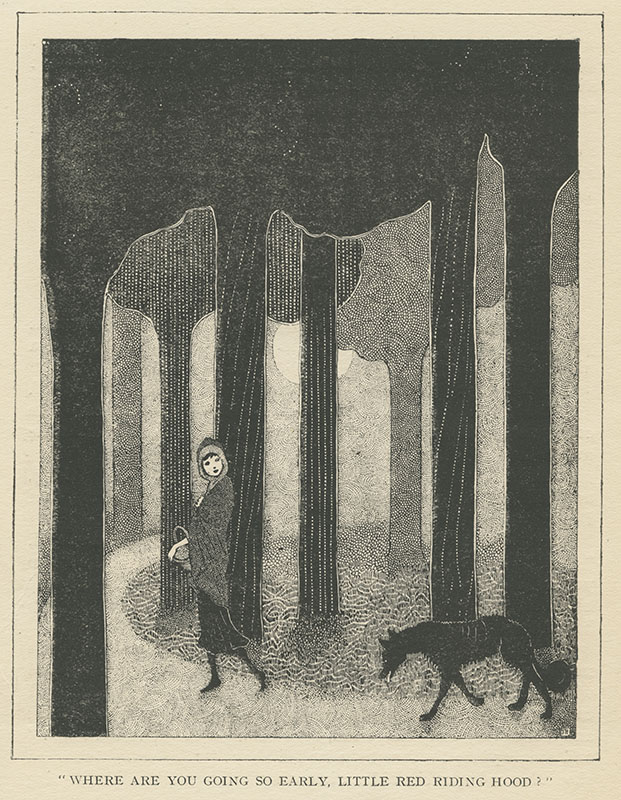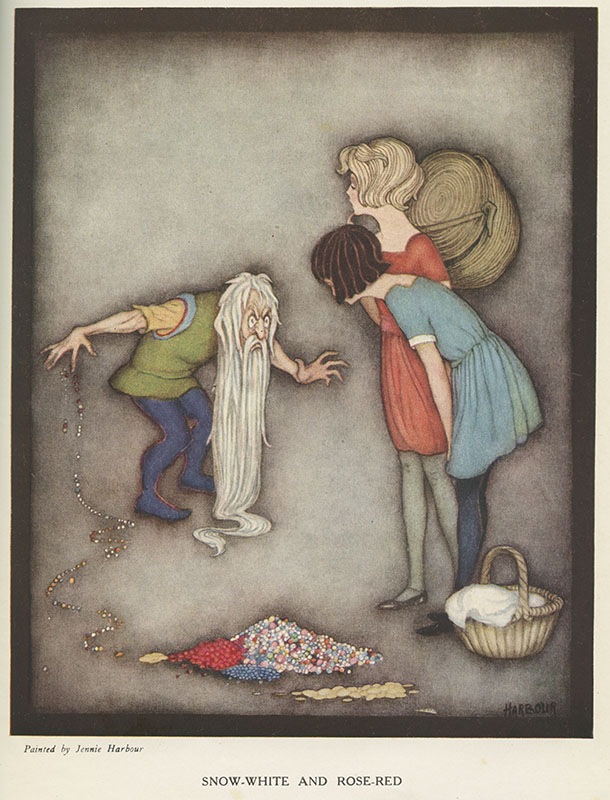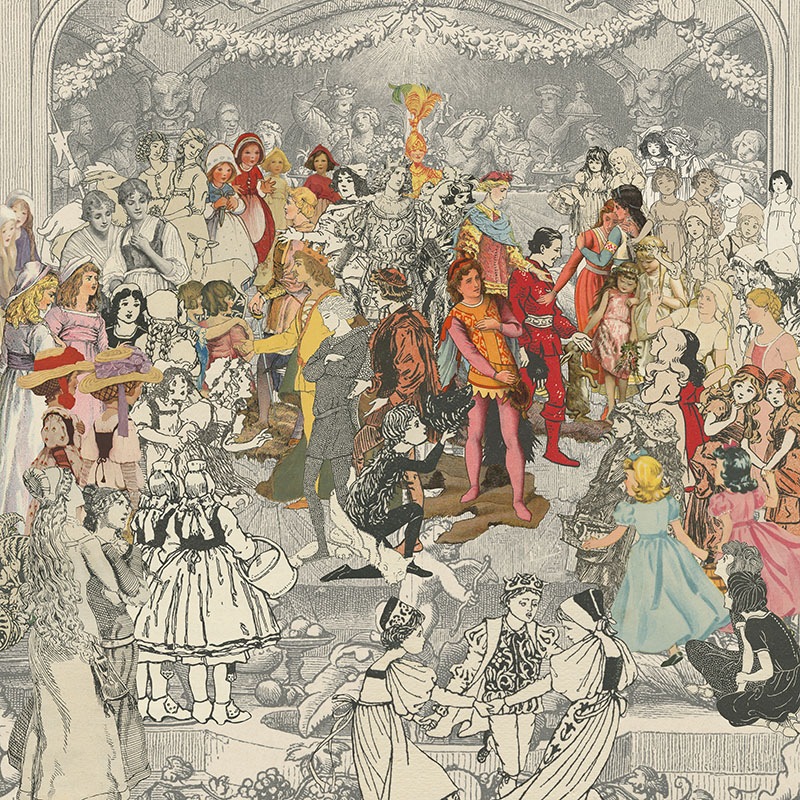Tom Olson and the Tiger: An Animator’s Tale
Robert Frost famously wrote, “Two roads diverged in a yellow wood, And sorry I could not travel both . . . . I took the one.” The writer Frank Stockton had previously put it a different way: A youth has to choose between two doors, one of which hides a beautiful maiden he must marry and the other a tiger who will devour him. Tom Olson knows this choice all too well, but to get to that point we first have to travel a few decades back through time. While these days, Olson and I exchange texts about the ramifications of firefly incest and the suitability of the Kool-Aid Man to voice the Hindu god Brahma, our witty banter about the artistic process was not always a foregone conclusion.
In the Beginning…
This story starts in 1979, when I was being born in a North Carolina hospital and Olson was a disillusioned ex-graduate student in Ithaca, New York, having moved there to study philosophy at Cornell University. We both spent the year sleeping fitfully in student housing.
Olson’s fitful sleep, having decided that the philosophy he studied had been completely pointless, was born from living in a basement apartment with grocery trips to buy peanut butter, nonfat dry milk for homemade yogurt, and popcorn. He was surrounded by leftists distributing single-spaced typed proclamations, but was convinced there was more to propagandist literature and, ultimately life. Tom Olson’s road from former philosopher to flipbook artist started much like his left-leaning acquaintances: with the distribution of pamphlets. Instead of distributing mimeograph-machined manifestos, however, Olson handed out cartoons. (Which allegedly still exist in some long forgotten manila folder.)
Finding the still cartoon form somewhat limiting, but (wrongly) feeling he had no drawing talent of any kind, Olson luckily stumbled across a flipbook, which he responded to with amazement at how little ability it took to make something move. Like a magician, Olson soon found he could create a rabbit able to fly into the sun or instantly transform the sun into a wrecking ball. Even better, with the benefit a circle stencil, Olson didn’t have to rely on his non-existent art school training and could make oranges that turned into Swiss cheese that became grapes. Thus The Adventures of the Little Circle and The Little Circle Goes Wild came to life.
The Life of A Flipbook Artist
Olson was delighted that he could make the sun come out and scare someone, make a runner jump off a cliff (and the cliff save the runner), and that he could even make speech happen. With his newfound godlike powers, Olson realized that whereas most flipbooks were based around the idea of “Hey look it moves!” he could, within the narrative confines of ten seconds, actually create and resolve dramatic tension. Thus, such stories as How the Sun Becomes the Moon and Why the World is Round where born.
Explaining the impetus behind Why the World is Round, Olson says he is fascinated by world-origin stories. In Christian and Jewish theology, there is one God who says, “There is nothing, there needs to be something, and I’m going to create the earth, the sea, the darkness, and the light.” Hindu mythology, in comparison, has both a creating god and a destroying god. Brahma would say, “Hey, how about this?” and then Shiva would say “KABLOOM!” Olson thought the latter worldview would be an interesting way to develop our universe, and created an earth developed by iterative process in which a cubic earth is destroyed, a pyramidal earth is destroyed, and a spherical earth is adopted by Vishnu who hoists a little “earth” flag on the sphere.
Now in full command of his artistic gifts, he sought a publisher for his flipbooks. Sure enough, a publisher quickly picked up the little books with a phonecall saying “These are fantastic and we definitely want to publish them; we just need to talk to production and will call back soon.” Olson, thinking he was now on his way to the street level and beyond, celebrated with his friends and some cheap champagne. At the same time as this Ithacan jubilation, however, the New York production department was realizing that they couldn’t make the flipbooks for less than $3 and couldn’t sell them for more than $4, so the numbers just weren’t going to work. Undeterred, Olson sought out more publishers, who all told him the same thing. Somewhat more deterred, he went to law school.
The Beautiful Maiden
Although Olson had just barely cracked open the door with the hungry tiger behind it, he concluded that a better doorway to walk through might be the one behind which lay a successful career as an attorney with a marriage to the beautiful maiden. With this realization in hand, he, over the years, attained several sought-after legal positions in Washington, D.C. and became a proud father to two lovely daughters, as well as the owner of a picturesque suburban house with several pets. I could rattle off a truly impressive list of his career and life achievements that are, of course, all well and good, but Olson could never quite scratch the itch of wondering what was behind the other door he barely cracked open all those years ago.
So it was, late one Friday evening after a friend introduced me to Tom and he had invited us all over to dinner, that he pulled out a musty, old box full of his 1979 flipbooks. Everyone is the room was immediately enchanted. A full flipbook tour ensued, as one magical adventure after another sprang out from an almost bottomless box. The audience oohed and aahed for a while before moving on to dessert. As the evening was winding down and the guests started discussing their weekend plans, I started persuading Tom to let me walk away with his treasures tucked securely under my arm.
A short time later (in the scheme of things), I had curated and was installing a solo show of these pieces at a Massachusetts college art gallery, one state away from the Cornell gallery where the flipbooks had been born. I made reproductions of several flipbooks for visitors to enjoy, printed out some of the flipbooks in their entirety in poster format (which you can see and acquire in the Printorium for yourself), and had two projectors playing all flipbooks all the time. The show was, in my opinion, delightful beyond belief. Children of all ages, as well as the director of a nearby museum, agreed. That director wrote me (and I am paraphrasing), “I loved the exhibition!!! You did a fabulous job making the material really come to life. GREAT work!!!” Armed with these exclamation marks, I convinced Olson to come see the show for himself.
Tom, whose wife was busy saving the world in Los Angeles, brought a pair of friends with him to see the exhibit. We spent a couple days touring the area, enjoying the museums, and acting out the flipbooks in person. We had some delicious Italian food, a more questionable breakfast, and said our goodbyes at the local ice cream parlor. This undeniably pleasant weekend did not, however, prepare me for what was to come next.
The Tiger Returns
UPDATE (2/10/2018): The next year has brought a beautiful new YouTube channel showcasing Tom’s work under his new label, Truer Than True Comix.

